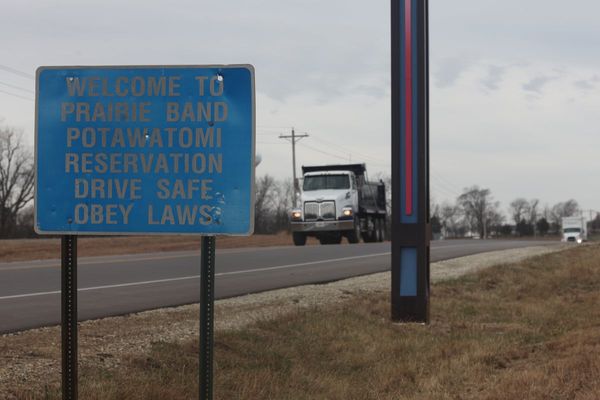As the 2025 Australian federal election approaches, political polls are coming thick and fast. This page will be regularly updated so you can track who is polling up, how the independents are faring and how the parties stand with different demographics.
This first chart is based on a poll averaging model developed by political scientists at the University of Sydney. It factors in sample sizes, previous results and “house effects” (bias towards a party) of each pollster.
There is a lot of uncertainty in political polling and modelling and these charts show a range that likely contains the support for each party. You can read more in our methodology at the end of the page.
The next shows a timeline of the two-party preferred (2pp) vote since 2022:
Looking at two-party support alone can obscure one of the biggest stories of the last election: almost a third of votes were for independents and other parties.
The 68.5% primary votes share for Labor and the Coalition is an all time low and the continuation of a steady decline since the two parties claimed 98% of votes in 1951.
The chart below shows the primary votes for Labor, the Coalition, Greens and others/independents. It is based on the same model as our main tracker, starting with the vote share at the last election. Use the drop-down menu to see what has changed over different periods since the election.
To get a sample that reflects the nation at large, pollsters collect a lot of demographic information, including age, sex, location and education.
Polling companies occasionally release two-party preferred measures for these sub-demographics.
The following charts use simple rolling averages to try to find the underlying trend in two-party support. There has been no adjustment for sample size, house effects, weighting or release date.
The first shows support by the age group of the respondent.
The next chart groups respondents by education – those with no tertiary education, those with a Tafe or technical education, and those with university education.
The chart below groups respondents by sex – male or female. As the numbers are rolling averages, they will not always add up to 100.
The final demographic category is state. Data is not available for all states, largely because of their size. Tasmania, for instance, makes up about 2% of the population. A representative sample of 1,000 Australians would have far too few Tasmanians to provide a robust estimate.
The final table shows the two-party preferred share for all of the polls that feed into our models.
Poll Tracker FAQ: Notes and methods
What does Guardian Australia’s poll tracker actually do?
Most Australian political polls have a sample size of a little over 1,000 respondents. There’s only so much any one of these polls can tell you. And the fluctuations between polls and for the same pollster across time can often just be statistical noise.
The poll tracker pools all of the polls using a model developed by political scientists at the University of Sydney. It assumes political intentions yesterday are similar to today and today is like tomorrow, but with small random changes.
The model starts, and is anchored to, the actual 2022 election results. And it assumes polling organisations’ bias is fixed. This is what was observed in previous elections, such as in 2019.
Why does the polling model draw a line below Labor’s actual poll numbers (the circles) while the Coalition’s line goes right through their polling numbers?
As noted above - the model begins with the last election results and assumes voting intentions evolve over time. The model indicates the polls are overestimating the Labor vote. This pattern was also observed between the 2016 and 2019 elections. In that period the model was correcting for the pollsters’ systematic bias between those elections.
Is the Guardian Australia tracker a prediction of who is going to win the election?
No. It is simply an aggregation of the public polls. It is a snapshot in time of people’s stated voting intentions, which can change.
Why have we changed the poll tracker format/What is the range we are showing?
Every time we update the poll tracker the model runs thousands of simulations. The first version of this page only showed the average of these simulations – a single number. Our charts did include a credibility interval - sometimes also known as a margin of error. But highlighting just one number implied greater certainty than the data warranted.
The refresh to the page puts the emphasis on the credibility interval. We are using a 95% credibility interval - there is a 95% chance that the actual support for each party is inside this range. We are aiming to emphasise that there is a degree of uncertainty to both the results of any one poll and an aggregate of polls.
Why are we using a rolling average for some things instead of the same poll average model?
The demographic data is not consistent. Not every pollster releases demographic breakdowns, and the ones that do don’t necessarily release it with each poll. There can be months in between releases for some demographic variables, such as voting intention by level of education.
But this data is still useful and should be included in some form. Given we can’t model the data in the same way, we are instead using a simple rolling average to track it over time.
Notes and methods
The main poll tracker is based on work by Dr Luke Mansillo and Prof Simon Jackman. You can find their paper here.
The model in different disciplines is called a hidden Markov model or a state space model and employs a Kalman filter algorithm that uses a series of measurements over time, including statistical noise and other inaccuracies, to produce estimates.
These types of models are often used in fields such as robotics, economics and medicine to create estimates from noisy measurements.
Each newly published poll is treated as a new measurement, with the model factoring in new data in the context of what has come before.
The model begins with (is anchored to) the vote share for each party at the last federal election.
Only polls with a defined sampling procedure, reported sample size and fielding dates have been included in our dataset. Polls are sliced over the days that they are in the field.
Sample sizes are adjusted to account for non-response, with effective sample size fed into the model.
The model calculates house effects for each pollster dynamically, by finding systematic differences to what would be expected, given the current average.
The two-party preferred vote is adjusted to remove unknowns or nonresponses, leaving only Labor and Coalition shares.
The model is run 1,000 times for each update







